September 17 2024, Marcus Schenk
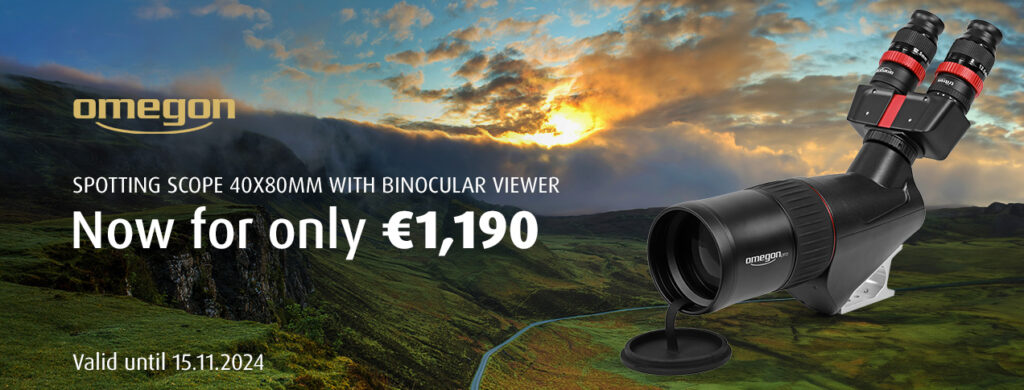
Attention stargazers and nature lovers! Our autumn highlight is here: The high-quality Omegon 40x80mm spotting scope now at a sensational promotional price of just € 1,190.
You can bring nature up close right before your eyes with this powerful bino spotting scope. Don’t miss this unique opportunity!
Save 20% on the Omegon 40x80mm spotting scope from 15/09 to 15/11/2024.
Purchase your personal spotting scope now and enjoy comfortable observations with both eyes!
Tags: Spotting scope
Posted in Sale|Sale
»
September 1 2024, Stefan Rieger
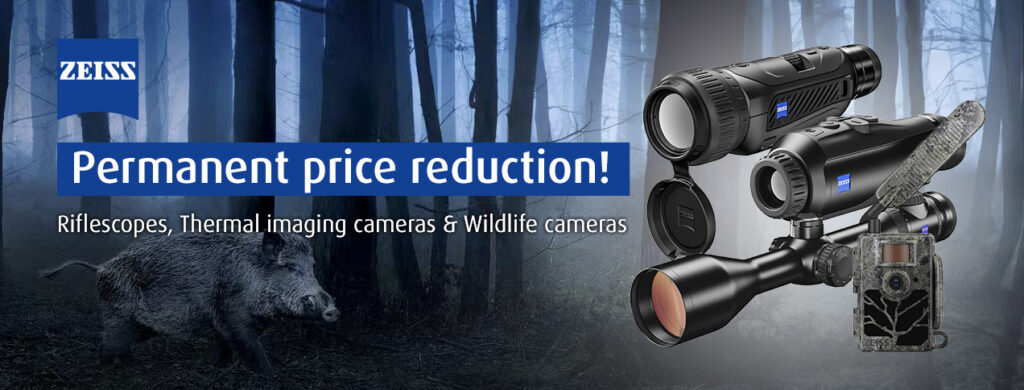
Generally everything becomes more expensive, but ZEISS is now making a positive exception to this trend! As of September 1st, the popular sports optics manufacturer is lowering the recommended retail prices for many items. You can benefit from the price reduction on the following product series:
So take this opportunity and renew your hunting equipment with the ZEISS bargains!
Tags: ZEISS, DTC3, Carl Zeiss, Night Vision, riflescopes, Secacam, Conquest V6, V8, DTI1, Wildlife cameras, DTI6
Posted in Sale
»
August 21 2024, Stefan Rieger
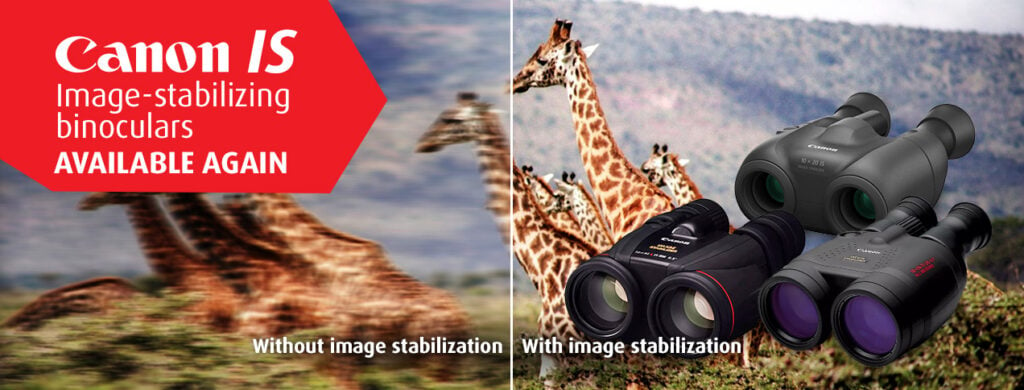
We are happy to be able to offer you the popular Canon IS binoculars again. All models are equipped with an opto-electronic image stabilizer, which minimizes tremors of the hand. This makes it easy to see and determine the desired object in focus, even on exhausting hikes.
So grab the Canon IS series right away, if you’re tired of shaky observations!
Tags: Canon, binoculars, Image stabiliser, IS
Posted in New Products|New Products
»
August 20 2024, Stefan Rieger
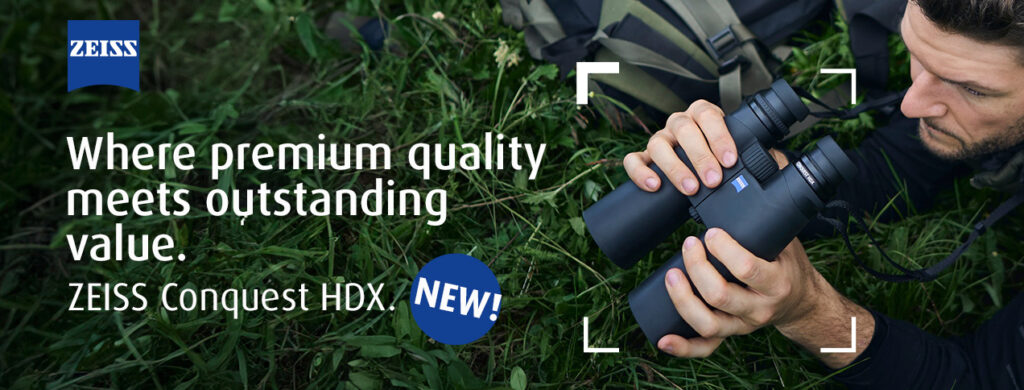
The ever-popular Conquest HD binocular series has been revised by the optics specialists and has a successor now. The new ZEISS Conquest HDX. Available with 32, 42 and 56mm objective lens diameters, this new binocular series aims to be the all-rounder in the premium sector for all nature lovers, birdwatchers and hunters. Deliveries of the 8×32 and 10×32 as well as the 8×42 and 10×42 are scheduled to begin in October. The 56 models with 8x, 10x and 15x magnification will then be available in November/December.
The new Conquest HDX promises the following features:
- PREMIUM OPTICAL PERFORMANCE WITH HD CONCEPT: 90% transmission, true-to-life colors and sharp, clear images right to the edge!
- ROBUST DESIGN: Robust mechanical construction, all-weather suitable thanks to LotuTec coating and Nitrogen filling
- GREAT ERGONOMICS: Fast and precise focus, comfortable and durable eyecups, lockable dioptre adjustment.
- PERFECTLY MATCHED ACCESSORIES: Removable lens cover, connection for tripod adapter, carrying case with shoulder strap
We have already had the opportunity to examine the new 42s and are pleasantly surprised by the optical improvement in terms of sharpness and distortion across the entire field of view. We were also impressed by the lockable dioptre compensation and the weight saving of almost 10% compared to the previous model.
Get your hands on one of the first examples today and order now!
Tags: binoculars, birdwatching, hunting, Nature Watching, Conquest HDX, ZEISS
Posted in New Products|New Products
»
August 19 2024, Stefan Rieger
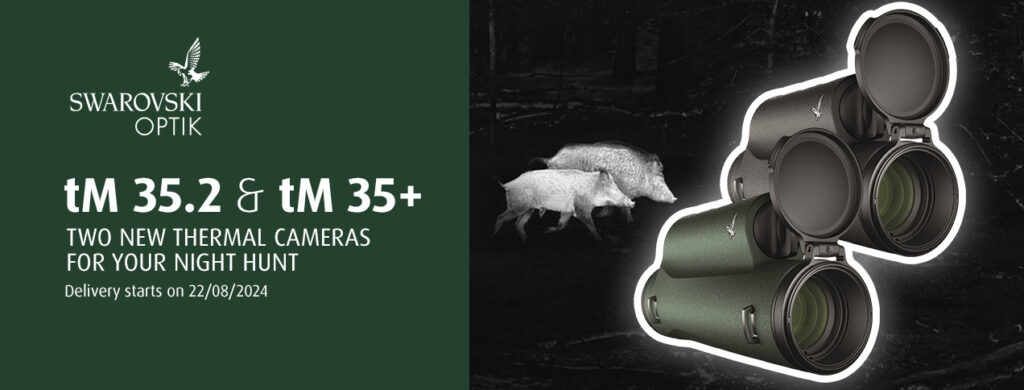
Swarovski has introduced two new thermal cameras that can be used either as handheld devices or as attachments. The new devices are called tM 35.2 and tM 35+.
The tM 35.2 replaces the previous model tM 35 and has been revised in terms of sensor sensitivity and software algorithms. The new sensor delivers a NETD of < 30 mK at a resolution of 320×256 pixels. The resolution of the AMOLED display is 2560×2048 pixels.
Compared to this, the tM 35+ is a completely new development. This sensor delivers a resolution of 640×512 pixels and an extremely large field of view that is 21.6 metres wide at a distance of 100 metres. This makes it suitable for the use in open fields, as well as in narrow passthroughs on the way to a hunting ground.
The two devices can be distinguished by their colors: The tM 35.2 is black and the tM 35+ is green. The recommended retail prices are €2,850 for the tM 35.2 and €3,900 for the tM 35+. Both models will go on sale on the 22nd of August.
Make sure you get your hands on one of the first models and pre-order now!
Tags: thermal camera, thermal imaging, tM 35.2, tM 35+, Swarovski, Night Vision, hunting
Posted in New Products
»
August 1 2024, Stefan Rieger
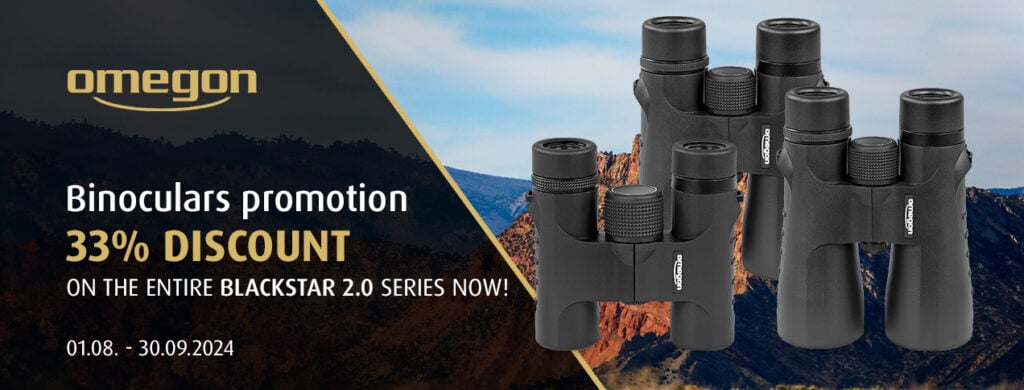
We are currently offering our binoculars of the Omegon Blackstar 2.0 series, which are very popular among beginners, with a 33% discount.
Key features of the Blackstar series:
- Comfortable viewing thanks to twist-out eyecups
- Multi-coating provides a high-contrasted and detailed image of the surroundings
- True-to-life image
- Compact design combined with a bright image
- Good color correction
- Shockproof and waterproof housing protect the binoculars when travelling
If you are seeking for a pair of binoculars with an excellent price/performance ratio, get these now!
The reduced price is valid only until September 30th, 2024.
Tags: Omegon, binoculars, Binocular, Sale, Blackstar 2.0
Posted in Sale|Sale
»
July 5 2024, Stefan Rieger
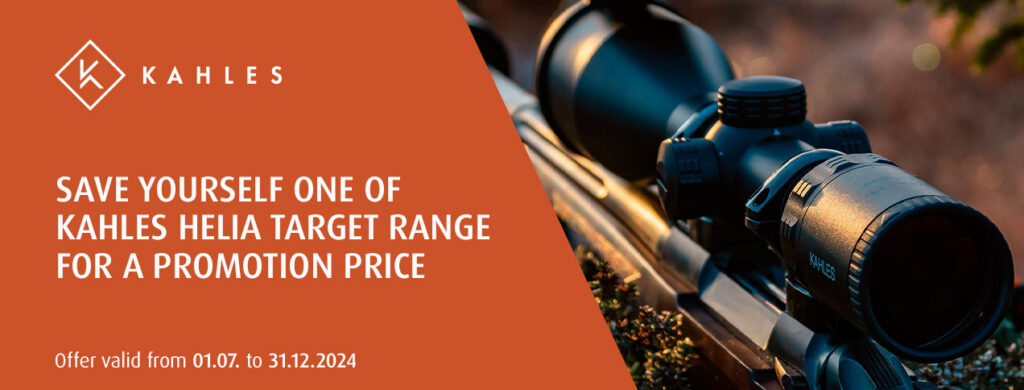
The HELIA riflescope series from KAHLES, popular with hunters, was reduced in price and you can benefit from it!
These riflescopes were developed primarily for hunting. They offer a robust construction with a 30mm center tube diameter. The illuminated reticle offers fine brightness adjustment for hunting at dusk, as well as in bright daylight. The automatic switch-off function saves battery life.
With a choice of four different magnification ranges and objective lens diameters there is a specialist or “allround” model 2-12×50 for every type of hunting. Most models are also available with an SR rail for mounting.
Enjoy the quality of a European development at a special price!
Tags: Kahles, Helia, Riflescope
Posted in Sale
»
July 2 2024, Stefan Rieger
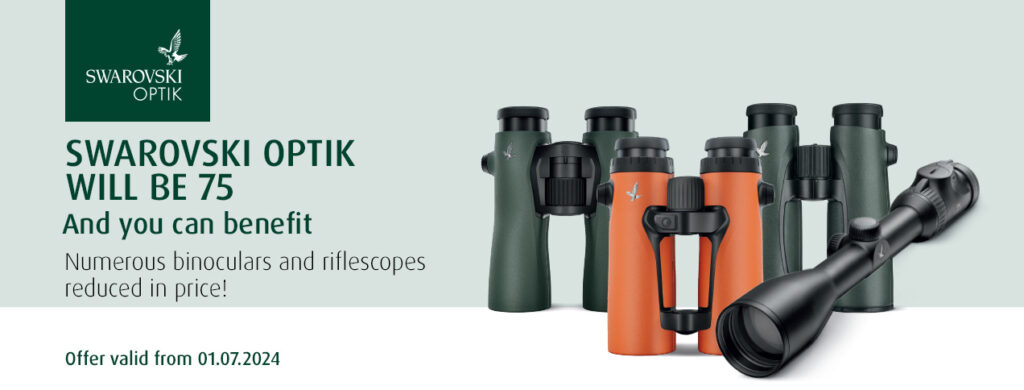
To mark the 75th anniversary since Swarovski Optik was founded, the prices of some items have been reduced. The prices of the following products have been reduced:
Swarovski binoculars of the EL series with 42mm, the EL RANGE series with 42mm objective lens diameter and the NL Pure series with 32 and 42mm objective lens diameter.
Swarovski riflescopes from the Z6i series
Take advantage of the anniversary prices and order now!
Tags: EL, Swarovski, EL Range, Binocular, NL PURE, Z6i, Riflescope
Posted in Sale
»
June 20 2024, Stefan Rieger

We have reduced the prices once again for Conotech thermal imaging cameras. The sales prices are up to 40% below the former recommended retail price.
Take this last chance to grab one of these thermal imaging handheld devices with rangefinder from the Tracer series or an attachment from the Artemis series!
Tags: Sale, thermal imaging, Conotech
Posted in Sale
»
June 19 2024, Stefan Rieger
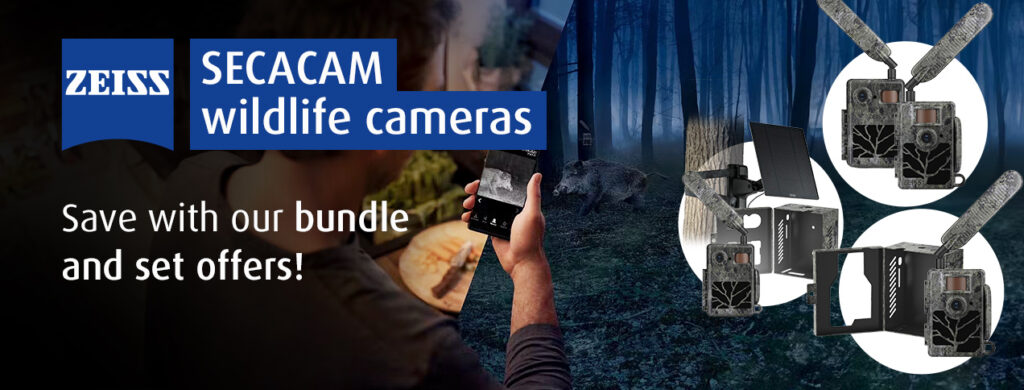 From now on you can save on multiple packs and sets, including useful accessories, for the ZEISS Secacam models 5 & 7.
From now on you can save on multiple packs and sets, including useful accessories, for the ZEISS Secacam models 5 & 7.
This link will take you directly to the various set offers!
Tags: wildlife camera, ZEISS, Secacam, Trail camera
Posted in Sale|Sale
»










